Pulverizer Attachments: Enhancing Farm Efficiency
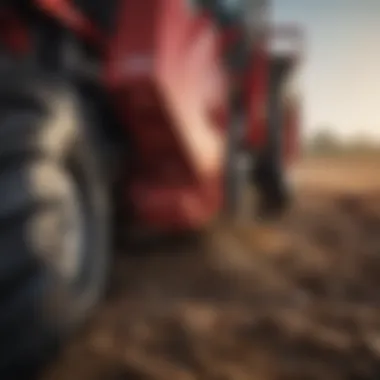
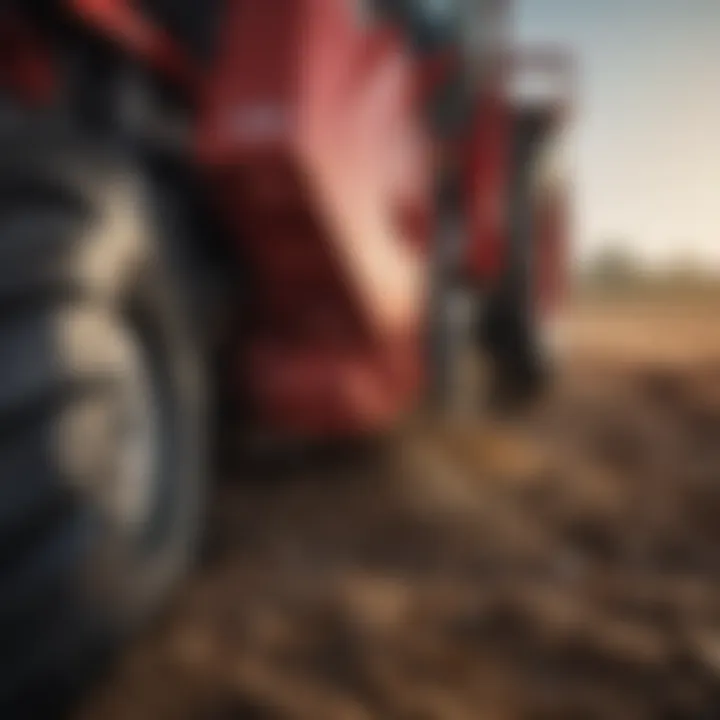
Intro
In the world of agriculture, the equipment used can make or break the efficiency of farming practices. One such attachment that has gained traction in recent years is the pulverizer. This tool, often fitted to tractors or larger machinery, serves a crucial purpose in soil preparation and crop management. The pulverizer reduces soil clumps, mixes in nutrients, and prepares the land for planting, ensuring a uniform and fertile foundation for crops.
Understanding what a pulverizer does is not just about knowing how it works. It involves appreciating its role in the bigger picture of agricultural productivity. By enhancing soil quality, it contributes to better yields, which means more food to feed a growing population. As we dive into the intricacies of pulverizer attachments, we will explore various types and their applications, discuss their benefits and limitations, and offer practical insights for farmers looking to optimize their operations.
This discussion will also delve into recent innovations and emerging trends, shedding light on how these advancements align with sustainable agricultural practices. With a focus on real-world applications, this article aims to provide a well-rounded understanding of the pulverizer's relevance in modern farming.
Prolusion to Pulverizer Attachments
In the realm of modern agriculture, the significance of pulverizer attachments cannot be overstated. These devices play a critical role in enhancing soil quality, facilitating crop growth, and boosting overall farm productivity. When farmers engage with these attachments, they gain the ability to transform dense, clumpy soil into a fine, workable medium conducive to plant development. This process not only aids in effective planting but also improves water retention and aeration – essential factors for plant health.
Definition and Purpose
Pulverizer attachments serve to finely break down soil or crop residues, allowing for improved incorporation of organic matter and fertilizers. Specifically, these machines can blend nutrients more evenly into the soil, ensuring that crops receive balanced nourishment. Moreover, the process of pulverization helps in managing weeds and pests, which often thrive in unchecked farmland conditions.
"Proper soil preparation is half the battle won in agriculture; pulverizer attachments are a game changer in this context."
This technology optimizes agricultural practices by enabling farmers to perform multiple tasks in one go. From soil preparation to residue management, the efficiency gained through these attachments leads to significant time and labor savings.
Farmers can look forward to enhanced yield potential as they utilize pulverizer attachments effectively. With modern designs tailored for various soil types and crop requirements, understanding these tools becomes a fundamental step for anyone involved in farming. As the agricultural landscape grows more competitive, integrating suitable pulverizer attachments can provide a crucial edge.
Types of Pulverizer Attachments
Understanding the various types of pulverizer attachments is essential for anyone involved in agricultural practices. These attachments play a pivotal role in the efficiency of soil management and crop production. Each type offers its distinct advantages, ensuring that farmers have versatile tools at their disposal. By grasping the nuances of mechanical, hydraulic, and integrated pulverizer systems, agricultural producers can make informed choices that align with their operational needs.
Mechanical Pulverizers
Mechanical pulverizers are designed to break down soil and organic matter using physical force. These devices operate mainly through rotating blades or hammers that crush and pulverize debris. The simplicity of their design contributes to their effectiveness. They can be attached easily to existing tractors or tillers, making them a popular choice among farmers seeking efficiency without extensive modifications.
Benefits of Mechanical Pulverizers:
- Cost-Efficient: Generally, these devices are more affordable than their hydraulic counterparts. The lower initial investment can be crucial for small-scale farmers.
- Less Maintenance: Mechanical pulverizers usually require less care and repair, making them a hassle-free option.
- Immediate Results: Farmers can see immediate benefits in soil texture and aeration.
An example of a mechanical pulverizer you'd find robust in the field is the MASSEY FERGUSON PF series, widely favored for its reliable performance and adaptability.
Hydraulic Pulverizers
Hydraulic pulverizers harness the power of hydraulic systems to provide a more controlled and powerful method of pulverization. These attachments can exert significant pressure, allowing for the breakdown of even the toughest soils. They're particularly valued for their precision in managing soil consistency. The technology behind hydraulic mechanisms allows these pulverizers to adjust their performance based on the specific needs of the job.
Reasons to Consider Hydraulic Pulverizers:
- Precision Work: Ideal for fine-tuning soil structure, especially in precision agriculture where minute adjustments are paramount.
- Enhanced Power: Capable of working through compacted soils that mechanical options might struggle against.
- Variable Speed: Allows operators to change the speed and depth, ensuring the pulverization matches their requirements perfectly.
For instance, the CAT H Series offers a hydraulic unit that can adapt easily to varying soil conditions, marking its reputation among larger farms needing robustness.
Integrated Pulverizer Systems
Integrated pulverizer systems represent the next step in agricultural innovation. These are not standalone devices but rather attachments that work in conjunction with other machinery, combining multiple functions into one efficient system. They streamline operations by reducing the need for multiple pass-throughs of the land, combining tilling and pulverizing in a single run.
Benefits of Integrated Systems:
- Efficiency Redefined: By merging functions, farmers can save on both time and fuel costs.
- Space Saving: Less equipment means reduced space requirements on the farm.
- Multi-Functionality: These systems often include features for additional tasks, such as seed bed preparation or fertilizer incorporation, further enhancing their value.
A prime example could be the JOHN DEERE Integrated Tillage Tool, which seamlessly combines tillage and pulverization to optimize field preparation processes.
"Understanding the different types of pulverizer attachments equips farmers to enhance their productivity and adapt to the challenges of modern agriculture."
By recognizing the distinct advantages of each pulverizer type, farmers can make educated decisions tailored to their needs. Whether they opt for mechanical, hydraulic, or integrated systems, understanding these tools is key to advancing efficiency in agricultural practices and achieving better crop yields.
Mechanics of Pulverization
Understanding the mechanics of pulverization is fundamental to grasping how pulverizer attachments function effectively within agricultural practices. These attachments are not mere accessories; they play a critical role in optimizing soil structure, enhancing crop performance, and increasing overall farm productivity. The process of pulverization involves breaking down larger soil clumps into finer particles to create a more uniform texture. This is essential in promoting healthy root growth and ensuring that water and nutrients are properly absorbed by plants.
Principles of Operation
The principles of operation center around a few key elements that define how pulverizers work. At its core, pulverization relies on mechanical forces to reduce the size of soil particles. Here are the main components and considerations:
- Rotational Mechanism: Most pulverizers utilize a rotating mechanism, often comprised of blades or hammers, which exert force on the soil. As these components move rapidly, they create a shearing action that breaks apart the clumps.
- Adjustable Settings: A critical feature is the ability to adjust the settings based on soil conditions. For instance, in clay-rich soils, operators may need finer settings compared to sandy soils. This adaptability ensures that the pulverization process is appropriate for the specific agricultural context.
- Power Source: The type of power source used can affect efficiency. Diesel or electric-powered machines often deliver different levels of torque and speed, influencing how effectively the pulverizer can operate under various conditions.
"Properly calibrated pulverization equipment can significantly alleviate compaction issues, leading to better aeration and drainage in the soil."
In addition to mechanical forces, the size and shape of the pulverizer attachment also play a role in performance. The design can impact how deep the machine can penetrate the soil and how well it manages residue from previous crop cycles.
Benefits of Effective Pulverization
Implementing these mechanisms in agricultural practices provides numerous advantages:
- Enhanced Soil Structure: Proper pulverization breaks up compacted areas, allowing for better aeration and improved root systems.
- Weed Control: By reducing residue, pulverizers can assist in managing weed populations effectively, minimizing the need for herbicides.
- Resource Efficiency: When used accurately, these attachments enable farmers to utilize fertilizers more effectively. A pulverized, well-engaged soil can uptake nutrients more efficiently.
Considerations When Using Pulverizers
While they offer many benefits, it’s also important for farmers to be aware of certain considerations when utilizing pulverizer attachments:
- Regular Calibration: Farmers should routinely check and calibrate their pulverizers to maintain optimal performance.
- Know Your Soil: Understanding your soil type will help in selecting the right settings for the pulverizer.
- Observation and Adaptation: Observing how the soil responds post-pulverization can provide valuable insights for future adjustments.
Applications in Agriculture
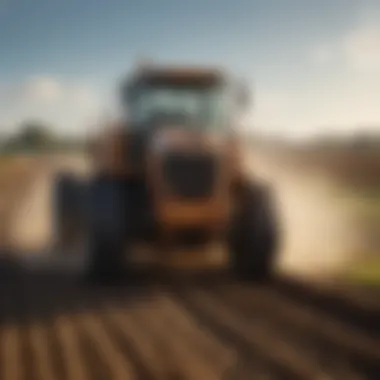
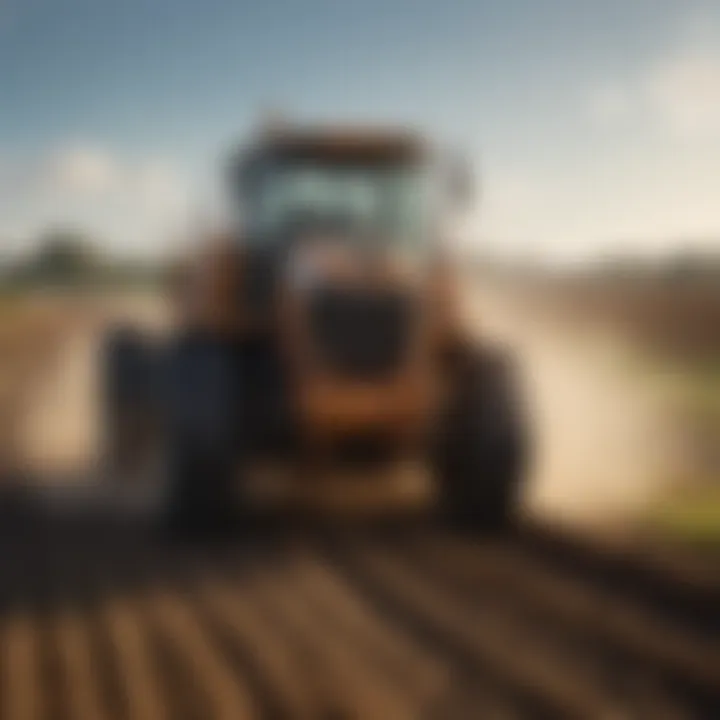
The use of pulverizer attachments in agriculture is not just a modern twist on farming; it’s a core component that enhances operational efficiency and productivity across various farming practices. As agricultural cycles become more intensive, the importance of effective land management cannot be overstated. Pulverizer attachments offer significant advancements in tackling soil preparation, crop residue management, and fertilizer incorporation. Each of these applications plays a critical role in ensuring that crops are healthy and yield well.
Soil Preparation
When it comes to preparing soil for planting, pulverizer attachments are invaluable. They break down large clumps of soil into finer particles, making it easier for seeds to embed and develop. The finer the soil texture, the better the roots can interact with it, allowing for improved nutrient uptake and water retention. Additionally, pulverized soil warms up faster in the spring, allowing for an earlier planting season and potentially enabling a longer growing period.
- Key Benefits:
- Improved seed-to-soil contact, which promotes germination.
- Enhanced water infiltration rates, reducing runoff and erosion.
- More uniform soil texture, which can lead to more consistent crop growth.
Proper soil preparation via pulverization can set the stage for a successful season, and the efficiency gained here reverberates throughout the entire agricultural process.
Crop Residue Management
Managing leftover plant material after harvest is a task that often gets overlooked, but it’s crucial to sustaining soil health. Pulverizer attachments excel in this area by efficiently breaking down crop residues into smaller pieces. This decomposition is vital as it enriches the soil organic matter, leading to improved soil structure.
- Benefits of Effective Residue Management:
- Helps in quicker decomposition, which prevents moisture loss.
- Reduces pests or diseases that thrive on unprocessed residues.
- Enhances soil biodiversity by improving habitats for various organisms.
By converting leftover plant material into a finer mulch, farmers can significantly boost soil health while also saving time and labor required for traditional residue management methods.
Fertilizer Incorporation
When applying fertilizers, the way they interact with soil can dictate their effectiveness. Pulverizers play a pivotal role here by mixing fertilizers into the soil thoroughly. This incorporation enhances the availability of nutrients to the plant roots rather than allowing them to sit on the surface.
- Key Considerations:
- Increased nutrient uptake as fertilizers are evenly distributed.
- Reduced risk of nutrient runoff, which is crucial for protecting water quality.
- Better soil aeration and tilth, leading to healthier root growth.
The efficient mixing of fertilizers not only promotes crop health but can also lead to significant cost savings over time through reduced fertilizer needs and less environmental impact.
Effective pulverization can save farmers both time and money, potentially transforming the farming landscape, making it essential for modern agricultural practices.
Benefits of Using Pulverizer Attachments
The use of pulverizer attachments has become a cornerstone in modern agricultural practices. These tools not only streamline work processes but also result in improved overall efficiency on farms. Understanding the profound benefits of these attachments can help farmers make informed decisions about their equipment choices.
Enhanced Soil Structure
One of the primary advantages of pulverizer attachments is the enhancement of soil structure. When soil is pulverized, it breaks down clumps into finer particles, mixing in organic matter, and making it more amenable to plant growth. This improved structure leads to better aeration and water infiltration. Healthy soil structure can also help prevent erosion.
- Increased Aeration: By breaking the soil into finer particles, air can move more freely, promoting the growth of essential microorganisms.
- Better Water Retention: A well-structured soil can hold moisture more effectively, benefiting crops during dry spells.
Such improvements in soil quality can pave the way for stronger roots and healthier plants, ultimately resulting in more productive yields.
Improved Crop Yields
The direct link between pulverizer use and crop yields cannot be overstated. When farmers use pulverizers to prepare their fields properly, they create an ideal environment for planting seeds. By breaking up compacted soil, pulverizers allow roots to penetrate deeper, accessing nutrients that may have been locked away in hard soil patches.
- Uniform Seedbed Preparation: Pulverizers create a consistent seedbed that allows for uniform seed germination and growth.
- Enhanced Nutrient Accessibility: The pulverization process integrates soil amendments and fertilizers more evenly, ensuring that plants receive the nutrients they need to thrive.
Increased crop yields often translate to higher profits, showcasing the financial viability of investing in pulverizer attachments.
Time and Labor Savings
In the world of agriculture, time is often of the essence, and labor costs can quickly escalate. Pulverizer attachments can significantly cut down the amount of time spent on soil preparation. When compared to traditional tilling methods, pulverizers are much faster and efficient, freeing up farmers to focus on other tasks on the farm.
- Speed of Operation: A well-maintained pulverizer can cover larger areas in a shorter time frame, allowing farmers to complete their preparations swiftly.
- Reduced Manual Effort: With heavy machinery doing the work, less manual labor is needed, which can be especially beneficial in larger farming operations.
Adoption of pulverizer attachments leads to improved productivity, allowing farmers to maximize their labor efficiency while dedicating more time to critical decision-making.
By enhancing soil quality, elevating crop yields, and saving on time and labor, pulverizer attachments emerge as essential tools in modern agriculture, propelling efficiency and productivity.
Challenges and Limitations
The journey toward integrating pulverizer attachments into agricultural practices is not without its bumps in the road. Recognizing and understanding the challenges and limitations of these tools is just as essential as knowing their benefits. Farmers and agronomists must weigh these factors carefully to make informed decisions regarding their use. In this section, we will discuss two significant aspects: high initial costs and maintenance requirements. These elements can greatly influence the effectiveness and sustainability of adopting pulverizer technology in farming.
High Initial Costs
When it comes to investing in pulverizer attachments, the price tag can be a stiff hurdle for many farmers. Depending on the type and brand, a pulverizer can cost thousands of dollars. For instance, mechanical pulverizers, while often more affordable than their hydraulic counterparts, may still represent a significant expenditure for small-scale farmers.
The initial investment can feel like a thorn in the side, especially for those already juggling tight budgets. It's crucial for farmers to take a closer look at this factor:
- Long-Term ROI: While the upfront cost might be daunting, consider the long-term return on investment. Enhanced soil structure, improved crop yields, and decreased labor can offset these initial expenses over time.
- Financing Options: Exploring financing options, such as loans or government subsidies, may alleviate some pressure. Many agricultural programs aim to support farmers in incorporating advanced technology.
- Used Equipment: Sometimes, a quality second-hand pulverizer can be a viable entry point. These options can save money while still providing the benefits of modern pulverization.
Understanding these financial dynamics is critical. It's wise to crunch the numbers and assess the potential gains versus the costs before making any purchases.
Maintenance Requirements
Once the investment is made, farmers must turn their attention to proper maintenance. Just like any piece of farm equipment, pulverizers need regular care to function efficiently over time. Neglect can lead to performance drops, impacting overall productivity and requiring costly repairs. Here’s what to focus on:
- Regular Inspections: Schedule routine checks to ensure all parts are functioning well. Look for any signs of wear or damage that could hinder operation.
- Lubrication Practices: Keeping moving parts well-lubricated is essential. Over time, components can wear out due to friction, leading to costly replacements or downtime.
- Replacement of Worn Parts: It's important to keep an eye on parts like blades or hammers. Worn equipment can lessen effectiveness and increase fuel consumption, wasting both time and money.
As highlighted above, maintenance might come across as a burden, but it’s an essential part of ensuring that the pulverizer remains reliable and maximizes its utility over the years. A consistent maintenance regimen can mean the difference between a well-performing attachment and one that becomes a headache.
Effective management of pulverizer attachments can lead to lasting efficiencies, but challenges must be navigated wisely.
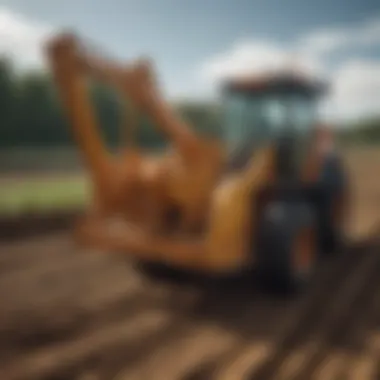
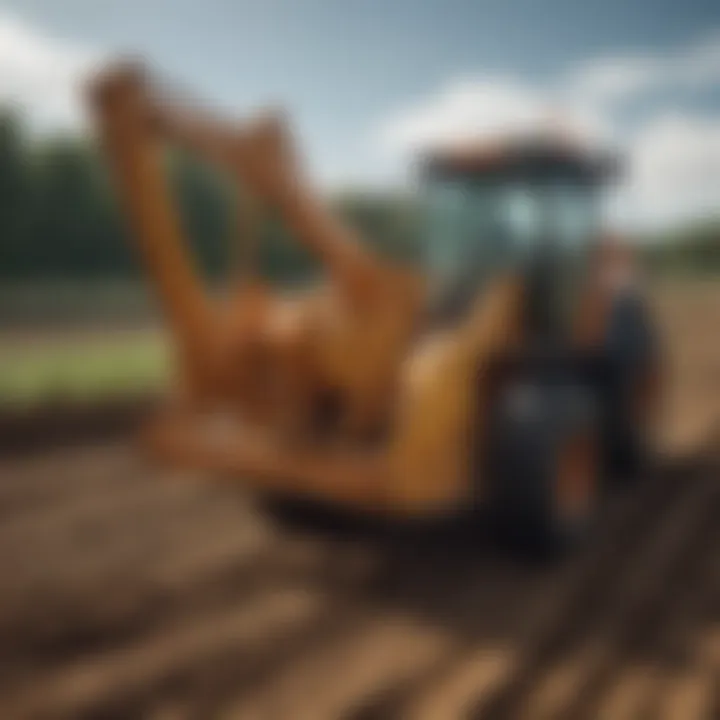
Selecting the Right Pulverizer Attachment
Choosing the appropriate pulverizer attachment for agricultural operations is no small feat. Not only does this decision affect the productivity of the farm, but it also encompasses broader implications regarding soil health and productivity. A wrong choice could lead to inefficiencies and wasted resources, while the right attachment can transform how a farmer approaches soil management and crop production.
Assessing Agricultural Needs
Before diving headfirst into the selection process, it’s crucial to accurately assess the specific agricultural needs of the farm. Each piece of land is unique, shaped by numerous factors including soil composition, previous cultivation practices, and the specific crops being targeted.
For instance, a sandy soil might benefit from a pulverizer that can break down larger aggregates and mix in organic matter, whereas clay-heavy soils may require a more robust approach to achieve a fine texture. Here are a few key considerations for evaluating needs:
- Soil Type: Is it sandy, loamy, or clay? Each type may require different pulverization techniques.
- Crop Requirements: Different crops often need varying levels of soil conditioning. Understanding the target crop's root depth and health could guide the selection.
- Historical Performance: Previous yields can inform which practices worked and which ones didn’t, offering a roadmap for improvement.
Knowing these factors can help direct farmers to the right tools, enabling smarter choices and ultimately enhanced agricultural practices.
Compatibility with Equipment
Understanding the compatibility of a pulverizer attachment with existing equipment is another critical aspect. There’s no use in finding the perfect attachment if it doesn’t mesh with current machinery. This can often create more headaches than benefits.
Here are some points to keep in mind:
- Power Requirements: Ensure that the tractor or the base machine has enough horsepower to drive the attachment efficiently, otherwise it may lead to inadequate pulverization.
- Mounting Systems: Check how the attachment mounts to the machinery. Some models might be designed for specific equipment brands, while others are more universal.
- Operational Specifications: Consider the width and height of the attachment compared to the size of the machinery. The last thing one wants is a mismatch that limits operational efficiency.
"Choosing the wrong pulverizer attachment can lock your farm into inefficiency, and nobody wants to be stuck in that rut!"
When farmers see their machinery working in harmony, it becomes a game changer. The right pulverizer can lead to significant improvements in productivity and soil health, thus paving the way for a prosperous farming future.
Maintenance Tips for Pulverizer Attachments
Maintaining pulverizer attachments is vital for farmers committing to optimal performance and longevity. These tools, which play a critical role in enhancing soil quality and crop yield, require regular upkeep to ensure they function effectively. Not only does maintenance help in avoiding breakdowns, but it also ensures efficiency and ultimately supports sustainable farming practices. Ignoring these pointers can lead to diminished effectiveness and can even cause costly repairs down the line.
Regular Inspections
Carrying out regular inspections of pulverizer attachments is paramount. Farmers should develop a routine check-up schedule, perhaps at the start of each season or before heavy usage, to evaluate the condition of their equipment. During these inspections, pay attention to:
- Signs of wear or damage on blades and other components
- Any unusual noises that might indicate mechanical issues
- The integrity of hydraulic lines in hydraulic pulverizers
A proactive approach can often catch minor issues before they escalate into major problems. Remember, a small crack left unnoticed today could lead to a machinery failure during peak usage tomorrow. Adjusting your inspection frequency based on usage intensity can also be a smart move.
Lubrication Practices
Proper lubrication practices cannot be overstated as it significantly reduces friction and wear on moving parts of pulverizer attachments. Adequate lubrication helps in prolonging the life of the equipment and ensuring smooth operations. Some pointers for effective lubrication include:
- Use the manufacturer-recommended lubricant for specific parts
- Ensure that lubrication points are easily reachable and clearly marked
- Schedule lubrication tasks in alignment with regular inspections
Farmers may also consider investing in automatic lubrication systems for larger setups, as this would ensure a consistent and controlled approach to maintenance. A well-lubricated pulverizer attachment is much like a finely tuned engine—when all parts are operating smoothly, the entire system thrives.
Replacement of Worn Parts
Over time, wear and tear is inevitable for any mechanical equipment, including pulverizer attachments. A clear understanding of when to replace worn parts is essential for maintaining efficiency. Key aspects to consider:
- Always have a set inventory of commonly replaced parts like blades and seals
- Don’t wait until a part fails to replace it; plan ahead based on your observations during inspections
- Consult the manufacturer’s recommendations for part longevity and replacement intervals
By being proactive in replacing worn components, farmers can avoid unexpected downtimes while ensuring that the attachment operates at peak performance. Making timely replacements is not just about fixing what’s broken; it's about optimizing the entire system for better productivity.
"A stitch in time saves nine"—this age-old saying rings true here. Regular maintenance is more than a chore; it's a critical investment in your farming operations.
Innovations in Pulverizer Technology
The agricultural landscape is evolving at breakneck speed, and the role of innovations in pulverizer technology is pivotal. Farmers are increasingly on the lookout for efficient, effective solutions that merge technology with traditional practices. This section delves into two significant innovations: smart technology integration and sustainability features. Together, they represent a transformative shift in how pulverizers function, aiming to enhance productivity while also addressing environmental concerns.
Smart Technology Integration
Smart technology has seeped into every nook and cranny of modern agriculture, and pulverizer attachments are no exception. These advancements are not just about flashy gadgets; they are rooted firmly in enhancing operational efficiency and precision in tasks.
For instance, consider precision guidance systems. These systems allow farmers to use GPS technology to ensure that pulverization efforts are both targeted and effective. By knowing exactly where to apply the pulverizer, farmers can avoid unnecessary soil disruption. Additionally, sensors installed on the attachments can monitor soil conditions in real-time, adjusting operating parameters to fit changing conditions. This not only ensures optimal results but also minimizes wear and tear on machinery.
Benefits of this smart integration are clear. It enhances accuracy, conserves resources, and often translates to higher profits per acre due to improved outcomes. In discussions with farmers, many have noted that integrating technology has drastically reduced their need for labor while increasing output—truly a win-win situation.
Sustainability Features
The push towards sustainable practices has led to innovative features that prioritize environmental preservation in automobile usage. Farmers are becoming more aware of the impact of their operations, and innovations in pulverizers are aligning with this trend.
One notable feature is the development of biodegradable blades and components, designed to break down over time without harming the environment. Furthermore, some attachments now come equipped with multi-functional capabilities, allowing for the integration of tasks like mulching, which helps conserve moisture in the soil.
Here are some key sustainability features:
- Reduced Fuel Consumption: Newer models are engineered to use less fuel, thus truncating carbon emissions.
- Soil Health Monitoring: Certain attachments include features that analyze soil microbiomes, providing farmers with insight into how to improve soil health.
"We must work smarter, not harder," says one progressive farmer, emphasizing the need for technology in sustainable practices. Innovations in pulverizers are helping make that a reality.
Integrating sustainability into pulverizer technology not only promotes environmental health but also caters to consumer demand for eco-friendly practices. It’s clear that as innovations continue to unfold, they add immense value, positioning pulverizers not just as tools, but as strategic partners in farming.
As we move forward, it’s evident that the future of pulverizer attachments rests heavily on the confluence of smart technology and sustainable solutions.
Case Studies Showcasing Effective Use
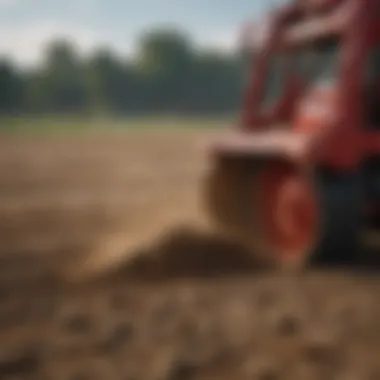
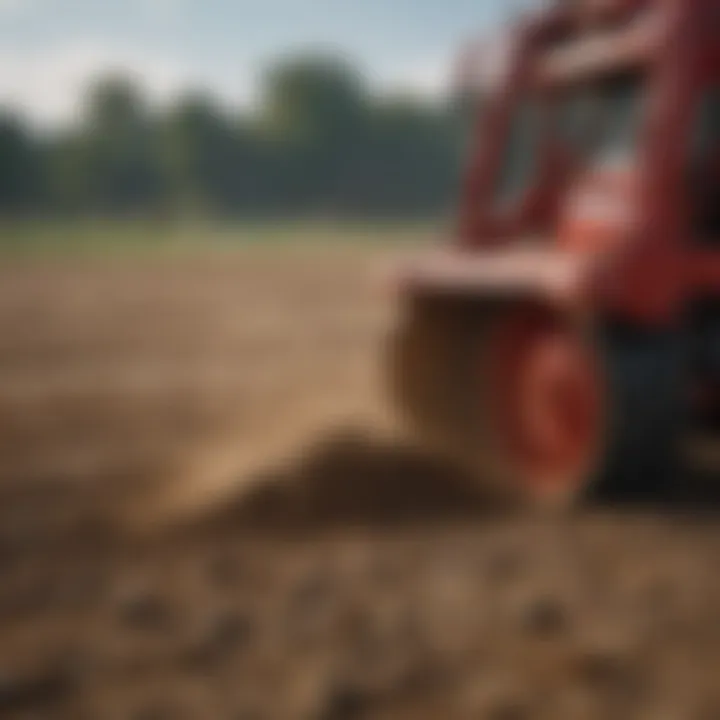
Case studies serve as compelling narratives in underscoring the practical advantages and real-world applicability of pulverizer attachments in agriculture. By providing concrete examples of farming operations that have successfully integrated these tools, they reveal insights that theoretical discussions often overlook. The cases of Farm A and Farm B are prime illustrations, showcasing how pulverizers enhance crop production and improve soil management, respectively. These examples not only highlight the significant benefits but also the strategic considerations that farmers might need to account for when implementing such technology.
Farm A: Enhancing Crop Production
Farm A, a medium-sized operation located in the fertile plains of Iowa, integrates a mechanical pulverizer attachment to maximize its corn yields. This specific attachment, known for its ability to finely break down soil clumps, allows for better seed bed preparation. As a result, the seeds are planted in an even, nutrient-rich environment, which is crucial in ensuring proper germination and growth.
The farmers at Farm A noted a discernible difference. Before adopting the pulverizer, they struggled with inconsistent crop stands due to clumping and uneven soil. Implementation of the pulverizer not only smoothed out the soil, making it easier to plant but also helped incorporate organic matter from previous crops. This not only preserved moisture but led to healthier, stronger plants.
Interestingly, the cost of the pulverizer was quickly offset by the increase in production. In just one season, the farm recorded a 25% rise in yield. This dramatic improvement illustrates the economic viability of employing advanced equipment like pulverizers in farming practices.
"Investing in the right tools has not just changed our yields, but also our confidence in facing crop challenges each season," remarked the farm's manager, underscoring the transformative impact of the pulverizer.
Farm B: Effective Soil Management
In contrast, Farm B, located in the rolling hills of North Carolina, focuses not just on crop production but also on sustainable soil practices. With a strong commitment to land stewardship, the farmers employ a hydraulic pulverizer that complements their no-till farming methods. This attachment plays a crucial role in breaking down crop residues and incorporating them back into the soil, promoting a healthy ecosystem below the surface.
One of the key advantages observed at Farm B is the reduction in soil compaction. Compacted soil can hinder root development, nutrient uptake, and water absorption. By using the pulverizer, they managed to create a healthy soil structure that improved drainage and aeration. Farmers found that their soil was more resilient, which was particularly beneficial during dry spells.
Additionally, the integration of the pulverizer alongside their existing practices led to a significant decrease in the need for chemical fertilizers and herbicides. By managing the soil health effectively, the farm minimized its inputs while still achieving solid yields. This aspect not only bolstered their profitability but also aligned with their environmental goals.
In both cases, the adoption of pulverizer technology brought about substantial changes. Each farm's unique approach highlighted that with careful consideration of their specific challenges and goals, integrating pulverizers could lead to significant advancements in productivity and sustainability in agricultural practices.
Economic Impact of Pulverization
The economic ramifications of using pulverizer attachments in agricultural practices are multi-faceted, influencing everything from farm efficiency to overall sustainability. When we talk about economic impact, it’s crucial to recognize that these devices, while often seen as a mere accessory, can play a pivotal role in enhancing farm productivity and reducing operational costs.
One fundamental element to consider is how pulverizers can effectively decrease the amount of time spent on soil preparation. Faster soil treatment translates to quicker planting times, which aligns with seasonal cycles and can make a significant difference. Farmers can cultivate more land and produce higher yields, thus boosting their income potential in the market.
Moreover, this efficiency doesn’t just stop at crop yields. The pulverization process can improve soil health, leading to better moisture retention and nutrient availability. In consequence, farmers might find that their investment in fertilizers and other soil amendments yields more significant returns when they incorporate pulverizers into their routine practices.
Cost-Benefit Analysis
A cost-benefit analysis is essential for understanding the economic impact of pulverization. Here’s a breakdown of what farmers should consider:
- Initial Investment: The upfront costs of procuring a pulverizer can sometimes seem steep. However, evaluating the long-term savings associated with labor and time can alter the perspective on this initial financial outlay.
- Labor Savings: More than just the physical equipment, consider how much farm labor costs. A pulverizer can streamline processes, leading to a dramatic reduction in hours spent on soil preparation.
- Yield Increases: With better soil structure, crops grow more effectively. Quantifying the expected yield increase can help justify the investment.
- Reduction in Chemical Usage: When soil is improved through pulverization, the dependency on chemical fertilizers might be reduced, leading to significant savings in operational costs.
"Assessing the cost-effectiveness of pulverization involves weighing initial expenses against potential long-term gains in yield and operation efficiency."
In wrapping this all up, a comprehensive cost-benefit analysis should consider all these factors to paint a fuller picture of how pulverizers can affect a farmer’s bottom line. By being conscious of both upfront investments and potential gains, agriculture practitioners can make informed decisions that align with their financial objectives. The role of economic analysis in incorporating pulverizer technology is indispensable for any modern farming operation aiming for sustainability and productivity.
Environmental Considerations
In the realm of agriculture, there’s been an increasing focus on sustainable practices, with environmental considerations becoming a cornerstone of efficient farming. The utilization of pulverizer attachments plays a pivotal role in mitigating adverse environmental impacts while promoting healthier farming ecosystems. Understanding these considerations not only highlights the attachments' functionalities but also showcases their importance in sustainable agricultural practices.
Soil Erosion Control
One of the most pressing issues in farming today is soil erosion. With weather patterns shifting and heavy rains becoming more common, topsoil—a vital resource for agriculture—is often washed away. By employing pulverizer attachments, farmers can effectively manage and reduce soil erosion. These devices work by finely grinding and incorporating soil particles, enhancing soil structure and stability.
When pulverizers are used for land preparation, they break up compacted soils, allowing for better water infiltration. This not only helps in maintaining moisture levels but also reduces surface runoff, minimizing the potential for erosion. Implementing this technology can mean the difference between lush greens and barren land, and making smarter choices in device selection can optimize results.
"Effective soil management is not just about productivity; it’s about preserving our planet for future generations."
Reduction of Chemical Inputs
Another significant advantage of pulverizer attachments comes into play when discussing chemical inputs. Modern agriculture often relies heavily on fertilizers and pesticides to boost productivity, but these chemicals can lead to pollution and negative effects on ecosystems. The incorporation of pulverizers allows for better mixing and distribution of organic matter into the soil. This helps in enhancing nutrient availability without heavy reliance on chemical fertilizers.
By breaking down crop residues and organic materials effectively, pulverizers can promote soil health and bolster natural nutrient cycles. The end result is a more balanced soil environment that needs fewer chemical aids for planting and growth. This reduction not only decreases costs for farmers but also contributes to a healthier ecosystem, reducing the potential run-off that can contaminate local waterways.
Future Trends in Pulverizer Attachments
As the agricultural landscape continues to evolve, it is crucial to explore future trends in pulverizer attachments. These trends will shape how we think about sustainability, efficiency, and productivity in farming practices. Adaptation and innovation in pulverizer technology not only promise improvements in operations but also align with broader agricultural objectives such as precision farming and environmental conservation.
Adoption of Precision Agriculture
Precision agriculture refers to the use of technology and data analytics to optimize farming practices. The adoption of this paradigm is significantly influencing future trends in pulverizer attachments. Here's how:
- Data-Driven Decisions: By integrating sensors and data collection tools, pulverizer attachments can now provide farmers with real-time insights. This allows for more informed decision-making regarding when and how to prepare the soil effectively.
- Targeted Approaches: Instead of treating fields uniformly, farmers can use pulverizers to target specific areas that require different treatments. This customized approach helps in managing resources more efficiently, whether it's water, fertilizer, or even time.
- Reduction in Waste: With precision technology, there is a noticeable decrease in wasteful practices. Less fuel is burnt, and fewer chemicals are used since the pulverizer can operate exactly where it is needed, when it is needed.
- Enhanced Crop Monitoring: Advanced pulverizers can be equipped with technologies that monitor the condition of soil right after pulverization. This can lead to immediate adjustments in crop management plans, ensuring that crops receive optimal care from the get-go.
"The future of pulverizer attachments lies in their ability to adapt to the specific needs of farms, providing tailored solutions that increase productivity while minimizing environmental impact."
Moreover, as farmers embrace technologies like GPS and machine learning, the functionality of pulverizers transforms dramatically. They become integral parts of a farm's ecosystem, working in synergy with other machinery while ensuring that sustainability remains front and center.
Lastly, the future trends in pulverizer attachments illustrate a shift towards more eco-friendly practices. Technologies that help in reducing soil erosion and enhancing biodiversity are now gaining traction. With these advances, the pulverizer attachment is no longer just a tool; it becomes a crucial player in the effort to create sustainable agricultural practices.
Epilogue
As we reach the culmination of our exploration into pulverizer attachments, it becomes abundantly clear that these tools offer significant advantages for today's agricultural practices. The efficiency and productivity brought by these attachments are not merely enhancements; they are essentials for any farmer aiming to keep pace with modern demands and sustainable practices.
The primary takeaway is the diverse applications of pulverizers. From soil preparation to fertilizer incorporation, their role spans across crucial processes in farming. This versatility aids in improving soil structure and fosters enhanced crop yields, which ultimately translates to better economic returns for farmers. Moreover, the time and labor savings realized through the use of pulverizers cannot be overlooked. Those who adopt these attachments are likely to find themselves spending less time on tilling and more on strategizing for future crops.
As important as the benefits are, it would be remiss not to consider the challenges discussed earlier. High initial costs and maintenance requirements necessitate careful planning and a commitment to keeping machinery in good shape. However, the foresight in investing in quality pulverizer attachments can likely pay dividends in the long run, making up for any initial concerns with rich harvests.
With sustainability becoming a growing priority in agriculture, incorporating pulverizer technology can also reflect well on a farmer's environmental dedication. By reducing the need for chemical inputs through better soil management and erosion control, these attachments contribute not just to individual farm success but also to broader ecological health.
In short, embracing pulverizer attachment technology is a step towards agricultural efficiency, productivity, and sustainability. As we anticipate the future of farming, it’s clear that integrating innovative tools, like pulverizers, will be key in navigating the evolving landscape of the agricultural sector. Expanding one's knowledge about these tools forms a crucial part of staying competitive, ensuring not just survival, but thriving in a complex industry.
Citing Sources
When it comes to citing sources, clarity and precision are paramount. Each reference should aim to lead the reader back to the original material without ambiguity. This often involves clear formatting guidelines, which many academic institutions or online platforms adhere to. In our case, using a diverse array of sources adds depth and breadth to the content. Here are some key pointers for citing sources effectively:
- Use Recognized Formats: Different fields have preferred citation styles. In agriculture, referencing theories, studies, and extensions often follows APA or MLA formats.
- Be Specific: When mentioning a study or a technique, be as detailed as possible about its author, date, and purpose. For instance, stating "A study by Smith et al. (2020) highlighted the cost-effectiveness of using mechanical pulverizers in small-scale farms" provides specificity.
- Incorporate a Variety of Sources: Relying on peer-reviewed journals, books, and credible websites results in robust citations. It showcases diligence in research and respect for authors' original ideas.
- Stay Current: Citing recent studies is critical to reflect the latest trends and findings. The agricultural sphere evolves, and outdated references can mislead readers.
In summary, proper and well-researched references uphold the structure of any informative material. They interconnect data, foster learning, and cultivate an environment of trust and knowledge-sharing. Emphasizing clarity in cited sources further enriches the ongoing dialogue in agricultural practices, driving home the message of efficiency and innovation in the field.















